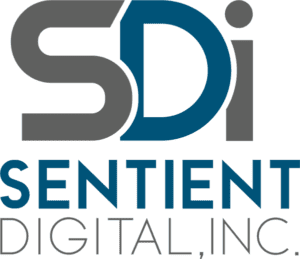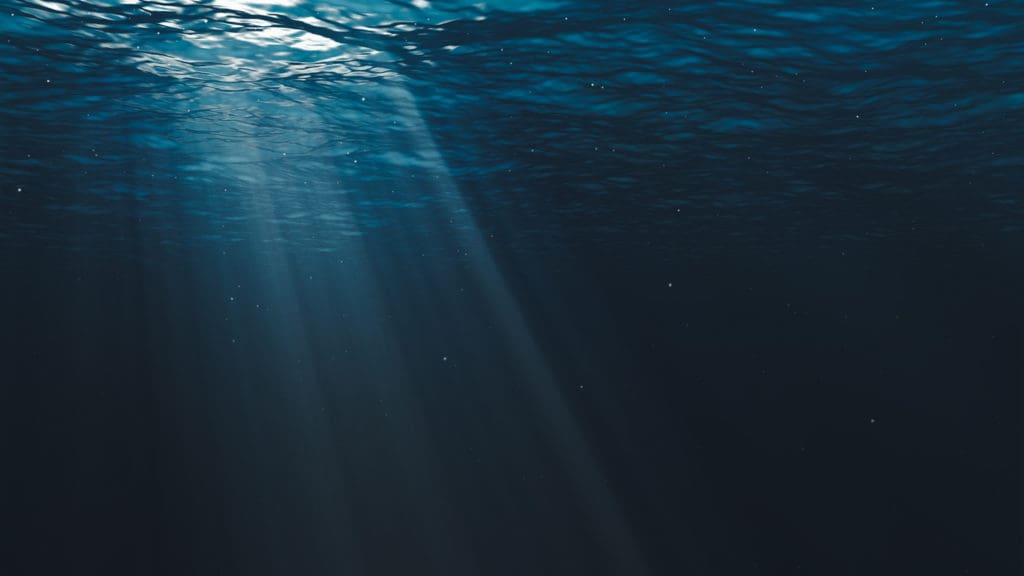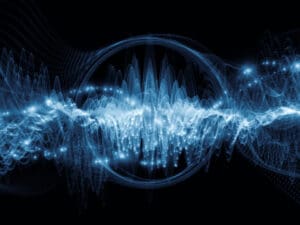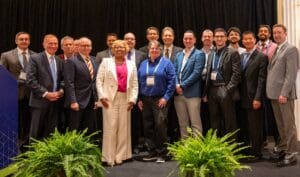Recently, we reviewed the history and development of an innovative piece of acoustic testing equipment, the Low Cost Advanced Processor (LCAP) by Sentient Digital’s subsidiary, RDA. At the time of its debut, LCAP constituted a major upgrade to the U.S. Military’s sonobuoy testing capability by providing real-time recording of transmitted testing results and a visualization screen that made it easier to monitor sonobuoys during acoustic testing. Nearly twenty years following its initial development, LCAP remains incredibly useful today. However, RDA is not done innovating with LCAP and has plans to ensure that LCAP begins to be used in additional settings, allowing it to serve an even wider client base. The LCAP system continues to evolve to adapt to the changing needs of the military and expand its use. Let’s take a look at the present and future of LCAP, including insights from a scientist, David Ambergey, who works with LCAP on a daily basis in a laboratory setting.
Background on RDA and LCAP
Founded in 1986, RDA primarily focuses on systems engineering, particularly acoustical engineering and related technologies, including for anti-submarine warfare (ASW) applications. RDA has locations in Doylestown, Pennsylvania, Warrenton, Virginia, and Lexington Park, MD. For many years, RDA has served as a Department of Defense contractor, particularly working with the U.S. Navy. Sentient Digital acquired RDA in June 2021, and while RDA continues to operate as a separate entity from Sentient Digital, the partnership has allowed Sentient Digital to expand its services in support of military clients.
LCAP is RDA’s flagship technology, a revolution in acoustic testing equipment, initially developed in 2003. Prior to the advent of LCAP, sonobuoy testing did not involve recording the transmitted results to hard drive. Instead, without this modern acoustic testing equipment, sonobuoys were deployed (and sometimes retrieved) with their results recorded on magnetic tape, which was less reliable and could easily become damaged. Additionally, if the sonobuoy encountered any problems during the testing, the operator would not be able to make corrections in real time. RDA designed LCAP to change all of this, and it has done so.
LCAP uses Microsoft Windows as its operating system and provides a visualization screen for easy reading of results and allows for the sonobuoy to notify its controller if it encounters a problem.
Additionally, the LCAP system’s efficient roll-on, roll-off design has allowed the system to be used on ships as well as aircraft, making it easy to move the system on and off of these vehicles. LCAP is flight certified for both the P-3C Orion and the new P-8A Poseidon fixed-wing aircraft, and has flown on both. The LCAP system is additionally certified for the Marine Corps MV-22B Osprey aircraft. Of course, as the name suggests, LCAP is both low-cost and advanced, making it an ideal combination of technology that fits within clients’ budget while providing the reliable and efficient results clients need.
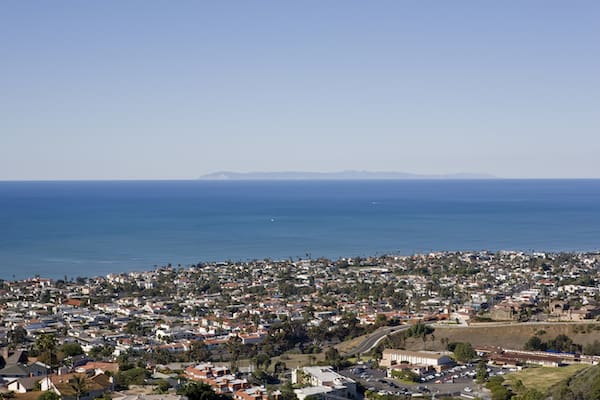
One of LCAP’s Current Usages, as High Tech Acoustic Testing Equipment at the San Clemente Island U.S. Naval Base
LCAP is currently being used in a variety of settings: at sea, in the air, and in a laboratory setting, the latter of which takes place primarily at the U.S. Naval Base on San Clemente Island in California. This base serves as a significant research and development facility for a variety of naval technology applications, among other functions, such as training facility and live fire range. LCAP’s utility for sonobuoy testing fits in well in this environment, contributing to the U.S. Navy’s missions’ success.
Currently, Naval Air Warfare Center Aircraft Division (NAWCAD) personnel from Crane, Indiana, travel frequently to the San Clemente Island base to use LCAP for sonobuoy lot acceptance testing. In 2009, RDA initially delivered three LCAP laboratory systems to Crane. One system remains in Crane for testing, evaluation and analysis of data. The other two have been moved to the San Clemente Island base. One of the San Clemente LCAP systems is used for testing there, and one is retained as a backup.
The process of using LCAP at the San Clemente Island base’s laboratory begins when the base receives sonobuoys as a sample from a lot of a production run, generally manufactured by third party contractors. The facility tests them using LCAP, in conjunction with other tools, but as will be discussed, LCAP has a versatility that makes it useful in a wider array of tests than many other tools.
Sonobuoys play an important role in U.S. national defense as they facilitate detection of enemy submarines. Their significance is such that the U.S. Navy recently ordered 126,000 sonobuoys to launch from aircraft for ASW purposes. When dropped from an aircraft in a pattern, these sonobuoys can send radio signals to aircraft that notify them of the location of enemy submarines. Therefore, the Navy needs efficient and accurate sonobuoy lot testing to ensure the proper functioning of this critical equipment. That is where LCAP comes in.
The versatility of the LCAP system makes it particularly useful for sonobuoy lot testing, as it can be used with different types of sonobuoys, as well as both passive and active sonar, and tactical applications. One of the objectives of the development of LCAP was to create a system to help the testers evaluate proper array deployment, in-buoy signal processing, RF uplink and downlink streams, and response to commands. With a design carefully attuned to these tasks, LCAP handles all of this with ease. “LCAP is the only system that can command, control, and record all data from all sonobuoys in the Navy’s inventory, including past, current, under-development, and experimental sonobuoys,” Amburgey explains. This unique value is what gives LCAP staying power as a leader in laboratory sonobuoy lot testing for the U.S. Navy.
Quality Assurance and Customer Support for LCAP
RDA puts the full force for its team of experts behind LCAP, not only in developing and updating LCAP’s software, but also in maintaining the quality of the system and making it easy for clients to provide feedback and receive assistance when needed. In order to ensure LCAP continues working properly when its software is updated, there is a robust testing system in place. LCAP software updates are tested at RDA location in Warrenton, Virginia and in the PISTL lab at NAWC in Patuxent River Maryland, before deployment to either aircraft or labs. This testing illustrates RDA’s commitment to the quality of LCAP. Additionally, RDA responds quickly to customer feedback and provides customer service that ensures that LCAP’s users never have to worry about getting support when they need it. Delivering a high-quality product, continually updating it while maintaining its quality, and providing exceptional customer support are all key points of what RDA delivers with LCAP.
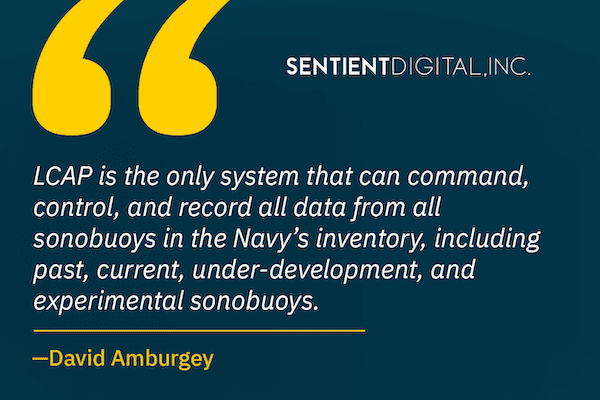
RDA’s Plans for The Future of LCAP
To this point, we have discussed one key aspect of LCAP’s value to the military in the present, its sonobuoy testing applications in a laboratory setting. However, what future plans and objectives does RDA have for the LCAP system?
RDA has always continued to make technical enhancements to LCAP as new conditions emerge. After all, one of the attributes that has helped LCAP stand the test of time in its nearly twenty-year history is its adaptability. During that time, the U.S. Navy transitioned from the P-3C Orion to the P-8A Poseidon, and LCAP has flown aboard both. Looking to the future, RDA hopes to use the LCAP system on new platforms such as SH-60R helicopter, and larger Unmanned Aerial Vehicles, also known as UAVs or drones.
Additionally, in the future, RDA wants LCAP to continue to serve the needs of the U.S. military, while also expanding into other markets. International customers interested in acoustic testing equipment, upon examining LCAP’s excellent track record and versatility, may find that LCAP is a good fit for them as well. RDA looks forward to assisting international clients with their technology needs in the future using the LCAP system. .
Overall, RDA intends to continue developing LCAP in response to any current or future needs the U.S. military or potential international customers may have. From the outset, LCAP has been the product of continuous innovation and RDA intends to continue building on this success to serve our clients.
Get The Latest Updates on Acoustic Testing Equipment and Other Cutting-Edge Technologies from Sentient Digital and RDA
As technology solutions providers, Sentient Digital and its subsidiary RDA, work to support military, government, and private sector clients with tailored technology products and support. From artificial intelligence to cybersecurity, digital transformation to systems engineering for sonar, we develop and implement the systems that further our clients’ objectives, allowing them to take on whatever challenges come their way in the future with confidence.
Learn more about RDA’s mission software solutions to get a fuller understanding of RDA’s work, and contact us to find out how our team can evaluate your needs and provide customized services by applying innovative technology.
